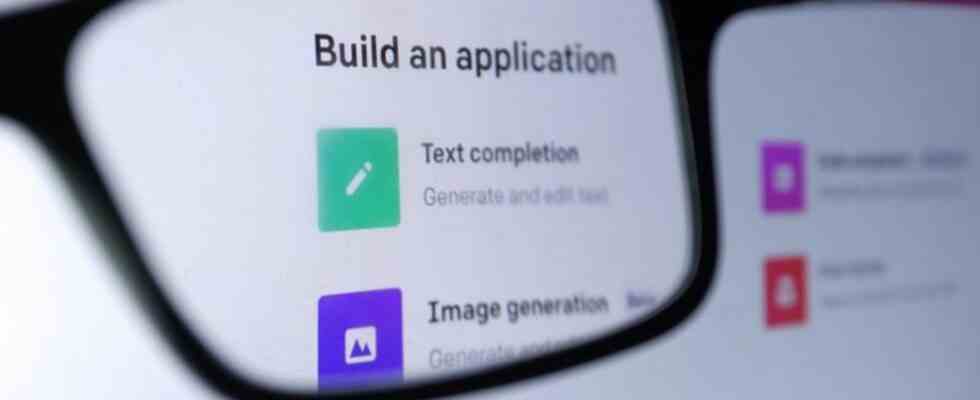Artificial intelligence
ChatGPT inventors launch detection tool
ChatGPT’s home page. Artificial intelligence that writes greeting cards, poems or factual texts – and sounds amazingly human. photo
© Karl-Josef Hildenbrand/dpa
Despite all the enthusiasm, there are many reservations about ChatGPT. He could help with cheating at school, for example. But in the future, a new tool should be able to distinguish text from humans or machines.
The creators of the writing software ChatGPT are now trying to get a grip on the consequences of their invention. The developer company OpenAI published a program that is supposed to distinguish whether a text was written by a human or a computer. ChatGPT is so good at mimicking human speech that there are concerns, among other things, that it could be used to cheat on schoolwork or create large-scale disinformation campaigns.
However, the detection still works poorly, as OpenAI admitted in a blog entry on Tuesday. In test runs, the software correctly identified texts written by a computer in 26 percent of the cases. At the same time, however, nine percent of the texts formulated by humans were incorrectly assigned to a machine. Therefore, for the time being, it is recommended not to rely primarily on the assessment of the “classifier” when evaluating the texts.
ChatGPT is artificial intelligence-based software trained on massive amounts of text and data to mimic human speech. OpenAI made ChatGPT publicly available last year, prompting admiration for the software’s capabilities and concerns about fraud.
Linguistically particularly sophisticated
The system convinces above all with the linguistic quality of its answers. At the same time, users cannot rely on ChatGPT to actually answer truthfully and get the facts right. Critics of the system are also bothered by the fact that the AI system cannot name any sources for its statements.
In the education sector in particular, there is a discussion about how the content of a text robot can be unmasked. With a classic plagiarism scanner, with which one can effectively check the authenticity of texts, one does not get any further. These scanners only check whether the text or parts of it already appear in other sources. However, ChatGPT’s AI writer produces unique texts that have never been formulated exactly like this.
OpenAI is also talking about using a kind of digital watermark for ChatGPT that would be invisible to the human eye. A special verification software would then signal whether it is an AI text or not.
The hype surrounding ChatGPT is now also frightening the competition. The Google group Alphabet in particular sees this as a serious threat to its own business model. Google has also been developing software that can write and speak like a human for years, but has so far refrained from publishing it. Now the Internet group is letting employees test a chatbot that works similarly to ChatGPT, the broadcaster CNBC reported on Wednesday night. An internal email states that a response to ChatGPT has priority. Google is also experimenting with a question-and-answer version of its Internet search engine.

